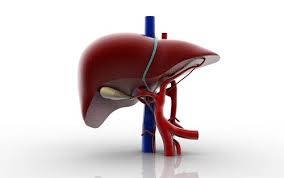
Cirrhosis of the Liver – Technical but useful
Cirrhosis of the Liver
Ramón Bataller, M.D.
Pere Ginès, M.D.
Institut de Malalties Digestives i Metabòliques, Hospital Clinic, Barcelona, Spain
Definition/Key Clinical Features
A diffuse disorganization of normal hepatic structure by extensive fibrosis associated with regenerative nodules
High morbidity and mortality
Advanced disease is usually irreversible
Insidious onset of symptoms
Generalized weakness, anorexia, malaise, weight loss
Loss of skeletal muscle mass
Symptoms may be absent or minor in “compensated” cirrhosis
Symptoms of hepatocellular dysfunction and portal hypertension
Progressive jaundice, skin hyperpigmentation, pruritus, xanthelasmas
Bleeding from gastroesophageal varices
Ascites
Neuropsychiatric symptoms
Coagulopathy, mucosal bleeding in advanced disease
Malnutrition
Fat-soluble vitamin deficiency
Nervous system, heart, and pancreatic symptoms in alcohol-related liver disease
Complications
Ascites
Gastrointestinal bleeding
Hepatorenal syndrome
Spontaneous bacterial peritonitis
Hepatopulmonary syndrome
Hepatic encephalopathy
Hepatocellular carcinoma
Differential Diagnosis
Hepatic encephalopathy
Intracranial lesions
Central nervous system infections
Other metabolic causes of encephalopathy
Toxic encephalopathy from alcohol or drugs
Postseizure encephalopathy
Psychiatric disorders
Best Tests
Physical Examination
Liver is enlarged in initial phases, decreased in size in advanced disease
Splenomegaly
Ascites and/or peripheral edema
Altered mental status, decreased consciousness, asterixis in patients with hepatic encephalopathy
Muscle wasting, palmar erythema, vascular spiders, gynecomastia, axillary hair loss, testicular atrophy, fetor hepaticus
Dupuytren contractures, parotid gland enlargement, peripheral neuropathy in alcoholic patients
Laboratory Tests
Serum aspartate aminotransferase (AST): frequently elevated, but levels > 300 U/L uncommon
Serum alanine aminotransferase (ALT): may be relatively low (AST/ALT > 2)
Prothrombin time: frequently prolonged
Serum albumin levels: decreased
Total serum globulin concentration: increased in advanced cirrhosis
Alkaline phosphatase: moderately increased; markedly increased in patients with biliary disease
Blood countSerum cholesterol and triglyceride levels: may be increased in biliary obstruction; low in advanced cirrhosis
Leukopenia and thrombocytopenia may be present
Normocytic anemia; may be microcytic, hypochromic, macrocytic, or hemolytic
Blood glucose: glucose intolerance and diabetes mellitus may be present
Serum sodium; hyponatremia is common
Respiratory alkalosis may be present with low serum bicarbonate and high serum chloride
Serum magnesium and phosphate levels: hypomagnesemia and hypophosphatemia
Creatinine and urea blood levels: elevated in renal failure in patients with ascites
Viral serologies to identify causative agent
α-Fetoprotein serum levels: at diagnosis and every 6 mo to detect early hepatocellular carcinoma (HCC); mild elevations are common in cirrhosis
Imaging
Real-time ultrasound
Demonstrates morphologic characteristics of cirrhosis
Irregular/nodular liver edges
Altered liver structure
Signs of portal hypertension, such as portocollateral veins
Detects hepatic steatosis, ascites, splenomegaly, and portal vein thrombosis
Rules out extrahepatic causes of jaundice
Detects early HCC
Color flow Doppler ultrasoundDynamic studies using CT and MRI: useful in assessing cirrhosis and diagnosing hepatic tumors; expensive
Shows portal hemodynamics
Detects hepatic tumors and tumor vascularization
Endoscopy: to assess presence and size of esophageal varices
Liver Biopsy
Not always necessary if clinical picture, labs, imaging suggest cirrhosis
Unequivocally establishes diagnosis
Helps determine cause and extent of liver damage
Percutaneous biopsy for most patients; transjugular biopsy for those with severe coagulopathy (INR > 1.5 and/or platelet count < 50,000/mm³)
Use with caution in patients with ascites or severe obesity
Subject to sampling error, especially in macronodular cirrhosis
Histologic findings
Extensive fibrosis and regenerative nodules
Periportal lymphocyte infiltration suggests HCV-induced cirrhosis
Mallory bodies, polymorphonuclear leukocyte infiltration, and steatosis indicate alcohol-induced cirrhosis and/or nonalcoholic steatohepatitis (NASH)
Biliary involvement indicates primary biliary cirrhosis (PBS)
Massive iron deposition indicates hemochromatosis
Best Therapy
Adequate caloric and protein intake
Mild exercise, including walking and swimming
Surgery and general anesthesia carry increased risks
Zinc sulfate (50–200 mg/day) for zinc deficiency
Topical testosterone for male patients with hypogonadism
Calcium and vitamin D for patients at high risk for osteoporosis
Aminobisphosphonates for decreased bone mineralization
Vaccination against hepatitis A, hepatitis B, pneumococci, and influenza
Avoid hepatotoxic medications (acetaminophen considered safe at dosages < 3 g/day)
Avoid nonsteroidal anti-inflammatory drugs (NSAIDs) and nephrotoxic antibiotics (e.g., aminoglycosides) in patients with ascites
Pegylated interferon plus ribavirin
Consider for patients with compensated cirrhosis due to hepatitis C virus (HCV) infection
For patients with decompensated cirrhosis awaiting orthotopic liver transplantation (OLT), initiate several months before OLT to prevent graft reinfection
Response lower than in noncirrhotic patients
May worsen existing anemia and/or thrombocytopenia
Pegylated interferon
Dose:
Alpha 2a, 180 µg/wk S.C.; cost/mo: $1,700
Alpha 2b: 1.5 µg/kg/wk S.C.; cost/mo: $2,700
Ribavirin
Dose: 800–1,200 mg/day p.o.; cost/mo: $1,100-$1,600
Orthotopic liver transplantation
1-year survival rate, 85%; 5-year survival rate, > 70%
Indications
Hepatocellular liver disease
Serum bilirubin > 3 mg/dl
Serum albumin < 2.5 g/dl
Prothrombin time >5 sec above control
Cholestatic liver disease
Serum bilirubin > 5 mg/dl
Intractable pruritus
Progressive bone disease
Recurrent bacterial cholangitis
Both hepatocellular and cholestatic liver disease
Recurrent or severe hepatic encephalopathy
Refractory ascites
Spontaneous bacterial peritonitis
Recurrent portal hypertensive bleeding
Progressive malnutrition
Hepatorenal syndrome
Hepatocellular carcinoma (< 3 nodules; no nodule > 5 cm; no portal invasion)
Contraindications
Severe cardiovascular or pulmonary disease
Active drug or alcohol abuse
Malignancy outside the liver
Sepsis
Psychosocial problems jeopardizing posttransplant care
Pruritus
Cholestyramine, 4 g/day; cost/mo: $40
Ursodeoxycholic acid, 10 mg/kg/day; cost/mo: $140
Naltrexone, 50 mg/day; cost/mo: $100
Rifampicin, 10 mg/kg/day; cost/mo: $100
Ondansetron, 8 mg q. 12 hr; cost/mo: $2,200
HBV-Related Cirrhosis
Lamivudine: may improve or stabilize liver disease in some patients; resistance can develop with prolonged treatment
Dose: 100 mg/day
Cost/mo: $230
Adefovir: active against wild-type and lamivudine-resistant HBV
Dose: 10 mg/day
Cost/mo: $610
Entecavir: active against wild-type and lamivudine-resistant HBV
Dose: 0.5–1.0 mg/day
Cost/mo: $660-$1,310
Alcohol-Induced Cirrhosis
Abstinence from alcohol
Nutritional support
Colchicine of questionable benefit
Superimposed Alcoholic Hepatitis
Glucocorticoid: alternative therapy; improves short-term survival in high-risk subgroup
Methylprednisolone, 32–40 mg/day for 4 wk, then tapered for 1–2 wk; cost/mo: $200
Pentoxifylline: alternative therapy; improves short-term survival
Dose: 400 mg q. 8 hr
Cost/mo: $20
Primary Biliary Cirrhosis
Ursodeoxycholic acid: relieves pruritus and improves biochemical blood test results, may delay need for liver transplantation
Dose: 13–15 mg/kg/day
Cost/mo: $230
Cirrhosis Due to Autoimmune Hepatitis
Use immunosuppressant therapy with caution because it may favor infections
Cirrhosis Due to Genetic Metabolic Diseases
Hemochromatosis
Phlebotomy
Wilson Disease
Copper chelators (e.g., D-penicillamine, trientine)
Zinc